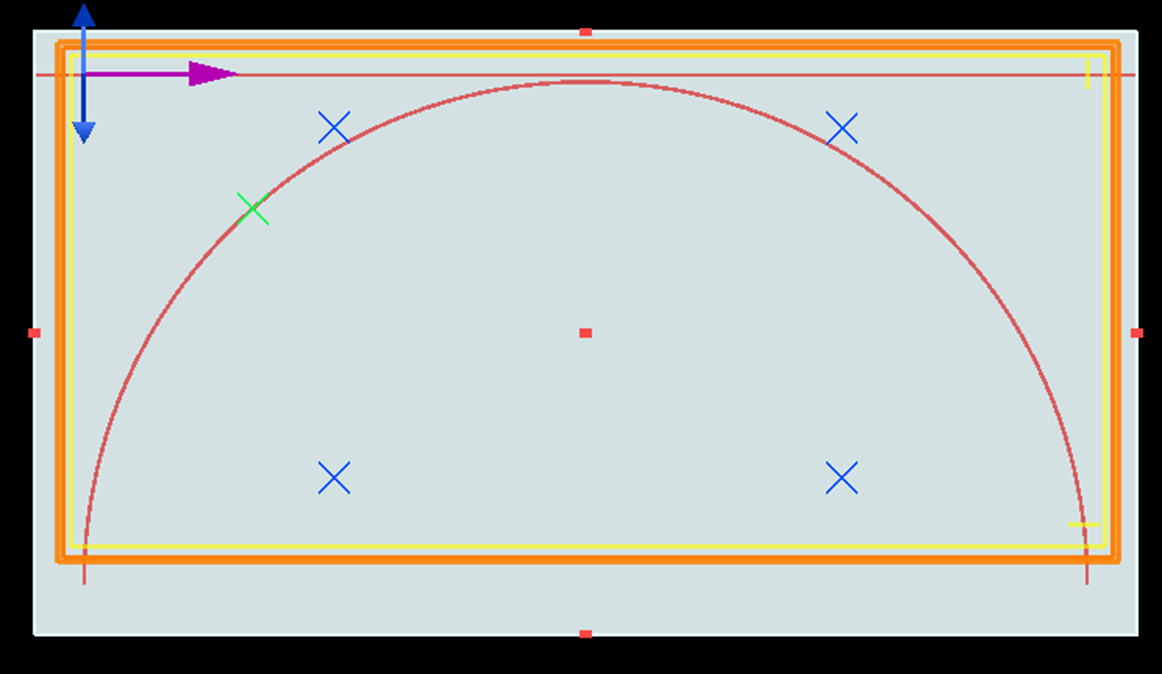-
-
May 3, 2021 at 9:16 pm
Taylor Robertson
Ansys EmployeeRing resonators can be challenging devices to simulate in FDTD given the long lived circulating light, and the size of these devices. A full FDTD or varFDTD simulation of ring resonators is the most conceptually intuitive way of doing this. It would likely be best to do the initial design exploration in varFDTD and the final verification step in FDTD. Initial design of the coupling length could be done in FDE - Evanescent couplers.
A more efficient and accurate way of modelling these devices would be to use MODE and FDTD to extract the important parameters and build compact models in INTERCONNECT for full circuit simulation.
- Calculating the loss by performing bent waveguide simulations. Note that the output from bent waveguide calculations would be the loss for a quarter ring, and if you want to calculate the ring loss, you will need to multiply this value by 4. An additional thing to consider would be the interface loss, this wouldn't be present in a perfect ring, but may be in a racetrack resonator or adiabatic curve.
- For the cross and self coupling coefficients, you can simulate only the coupling section similar to the approach in Y-branch except with a 4-port device using the S-parameter extraction utility. This would be the most general approach, but you could use the more approximate technique in Evanescent couplers as well.
- Finally use these physical parameters to construct a ring resonator from primitives in INTERCONNECT. The advantage here is that you can immediately add more complexity to produce coupled ring filters, modulators, phase delays etc.
Another approach will be to look at transmission and reflection which are related to coupling coefficients in this paper:
Extracting coupling and loss coefficients from a ring resonator. WR McKinnon, DX Xu, C Storey, E Post, A Densmore, A Delâge, P Waldron, JH Schmid and S Janz, Optics express, Oct 2009 12
A method is developed for extracting the coupling and loss coefficients of ring resonators from the peak widths, depths, and spacings of the resonances of a single resonator. Although the formulas used do not distinguish which coefficient is coupling and which is loss, it is shown how these coefficients can be disentangled based on how they vary with wavelength or device parameters.
The Ring modulator covers most points discussed here and should serve as great reference even when looking at passive rings.
https://support.lumerical.com/hc/en-us/articles/360042322794-Ring-modulator
October 18, 2021 at 4:48 amrenuraman
SubscriberHi I am using ring modulator example for passive ring resonator construction.(Ring modulator ÔÇô Lumerical Support).
The loss is in dB , I want losses in dB/cm.
The loss in MODE simulation is less for both straight and bend waveguide.
While for same example I saw around 24dB in interconnect . The input power in ONA is in 0dBm.
Could you tell me , what is the propagation loss in ring modulator example (I ran the script for passive waveguide, hence only 0V).
In same example as I seen loss as 24dB, then what is its value in dB/cm?
October 19, 2021 at 10:33 amrenuraman
SubscriberAlso in view of above question on ring resonator, what is that loss indicates in interconnect? Since the loss in dB is varying for change in wavelength value, I believe it should not be a total waveguide loss. How to calculate waveguide loss in ring modulator example? We are importing coupling coefficient from FDTD and neff, ng from MODE to interconnect, so how does interconnect accounts for loss? Please solve my queries. Thanks
November 12, 2021 at 12:24 amTaylor Robertson
Ansys Employee
I believe that for a righ resonator you would get the lumped loss from the S paraemter being less than 1. |S12|^2+|S11|^2<1 means there is power lost in the system. Or you can specify loss, maybe based on the loss of a curved waveguide[db/m] + the loss of the coupling [dB].
https://support.lumerical.com/hc/en-us/articles/360036618853-Single-Bus-Ring-Resonator-RING-INTERCONNECT-Element
https://support.lumerical.com/hc/en-us/articles/360042799933-Bent-waveguide-analysis
May 17, 2023 at 11:26 pmnathan henry
SubscriberHello, I am modelling a ring coupled to a bus waveguide however I'm just modeling half of the ring in order to get transmission through the ring. The power transmission should be my coupling coefficient squared. This works fine so far. I started in VarFDTD and then tried to confirm with full 3D fdtd, I am getting a lot stronger coupling in 3D fdtd which is the opposite trend than what I expected because I know that varFDTD tends to give shorter 100% coupling lengths. No loss in the Z direction in varfdtd.
Viewing 4 reply threads- The topic ‘How to include propagation loss and coupling coefficient in ring resonator’ is closed to new replies.
Innovation SpaceTrending discussionsTop Contributors-
4633
-
1540
-
1386
-
1225
-
1021
Top Rated Tags© 2025 Copyright ANSYS, Inc. All rights reserved.
Ansys does not support the usage of unauthorized Ansys software. Please visit www.ansys.com to obtain an official distribution.
-


Ansys Assistant

Welcome to Ansys Assistant!
An AI-based virtual assistant for active Ansys Academic Customers. Please login using your university issued email address.
Hey there, you are quite inquisitive! You have hit your hourly question limit. Please retry after '10' minutes. For questions, please reach out to ansyslearn@ansys.com.
RETRY








